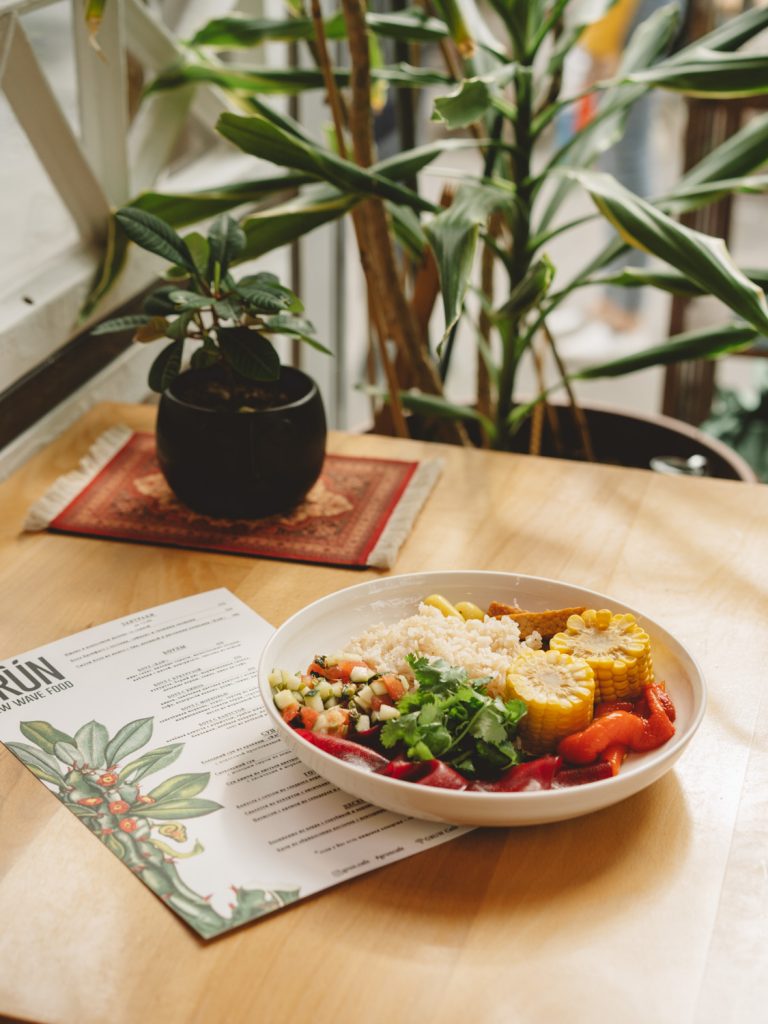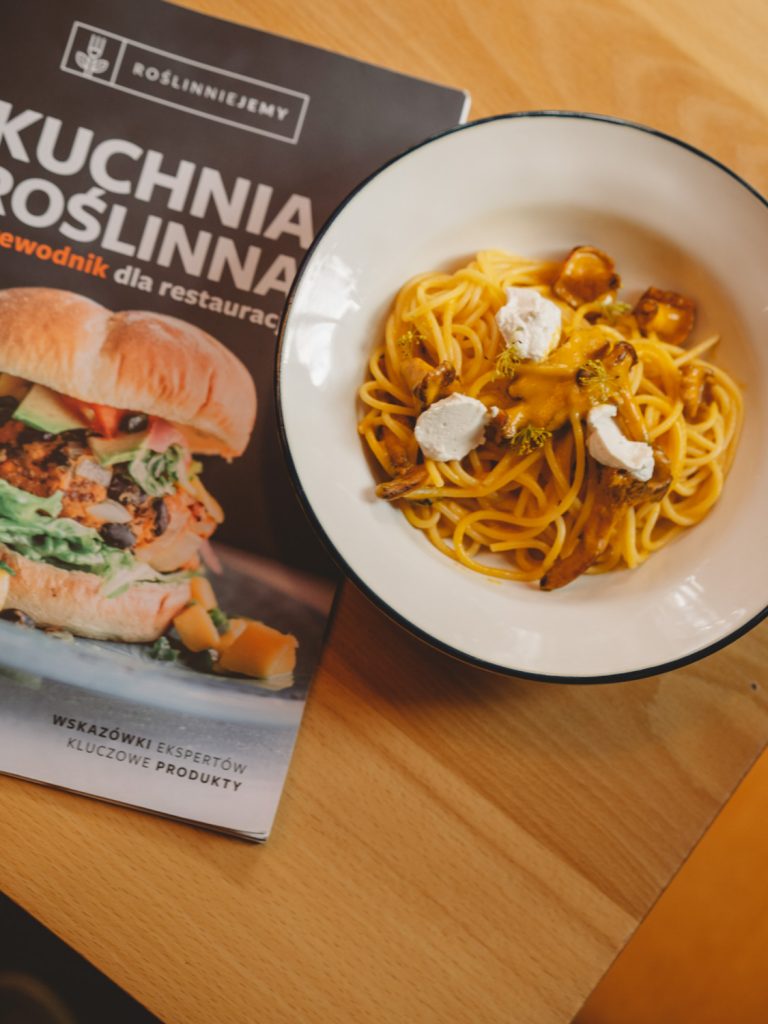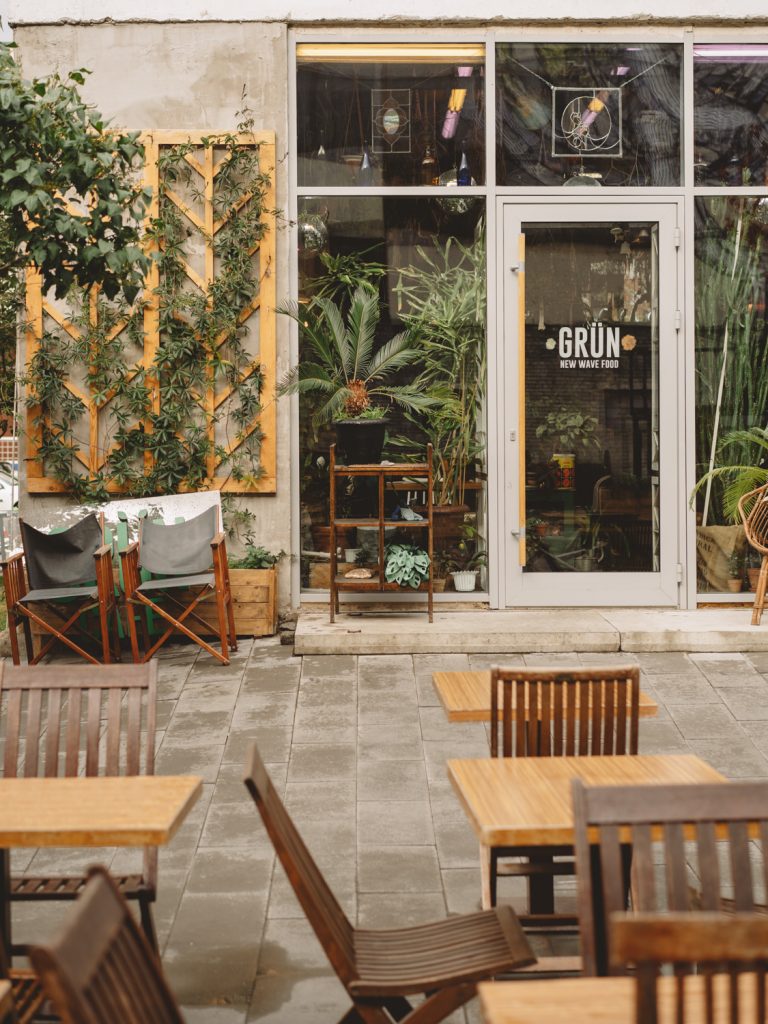Viktoria Mosina: “If you work in a restaurant, sooner or later people on plant-based diets will start visiting it”
Viktoria Mosina has been in the restaurant business for 10 years. During this time she worked in some of the best restaurants in Russia, and in 2019 she was on the Sobaka.ru shortlist for “The Best Chef of the Year”.

Representatives of the Eating Better campaign met Victoria at the “Anna’s Secret Garden” (previously Grun Cafe), where she’s been a chef since the beginning of this year. Here, she surprises guests with dishes hard to find anywhere else in the country.
Where did your passion for cooking start?
I started cooking at the Vegan Club when I was 16 years old. I was studying to be a sea transport organiser. The VC guys asked me to help in the kitchen. There is where it all began. Then I went to work in several small, vegetarian cafes. Soon I realised that there was nothing to learn there, and went to cook at Kokoko, a place that was ranked 108th in the world this year. I worked for 3 years there, gained huge experience and left while holding a position of a sous-chef. Then there was the EM restaurant – one of the best in the country – where I was preparing vegan sets. And it is from there that I left for Grun.
You have a lot of plants in your restaurant. Is it because every dish here is plant based?
It has nothing to do with that. Some of the plants we bought in a botanical garden, some were given to us by friends. Everything here, except for the dishes and the equipment, is recycled. We didn’t buy anything because we didn’t want to increase production. We’ve decided to use only what we’d already had.
How frequently do you update the menu?
Not that often. But I plan to do seasonal updates 3-4 times a year. Since autumn, we’ve completely changed the menu. We were able to give up sweet potatoes and started using carrots from local farmers instead. They’re now of excellent quality. The same goes for cabbage and all the food that we can find locally, without bringing them in by plane.
I always prefer to use local, seasonal products. Still, I won’t put myself in a pigeonhole and stop using, for instance, ginger, because it doesn’t grow here. No, I use whatever I like and it doesn’t matter where it comes from. But if I have a choice, I will always choose products that are grown here.

Is it true that to get a Michelin star a large percentage of the ingredients used in the restaurant should be produced locally?
For a Michelin star you need all the ingredients to be local. That’s why there will never be such a restaurant in Russia. Our local farming isn’t well developed yet so it’s hard to work with them.
It’s often cheaper to bring food by tanker, for instance from Chile, than to grow it in the Leningrad region.
Yes, of course. It’s more expensive to buy it directly from the farmers, because of their small production and high costs. They don’t use wax and pesticides on their crops, so they could bring you radishes with eaten leaves. It’s fine with me, but most restaurants won’t take it. I believe, however, that sooner or later it’s going to change. I call those farmers, make an appointment, but sometimes we don’t end up meeting. They work as if they only cared about the process itself and not the money. From April to November, I go to the forest and collect anything I can use later on: flowers, berries, branches.
How come you create such unusual combinations?
When you become a chef, you can take one of two paths. The first one is to chase after technology: invent new textures, make tomatoes out of strawberries, etc. Or, you can focus on the products: look for local farmers who grow rare products that no one else has or will have, except for you. I’m more interested in this approach. The all you have to do is to give these ingredients a subtle boost through processing and present them to people in a way that they’ve never seen or tasted. This is a great opportunity to surprise your guests – with new dishes that no one has ever tried before. It’s rarely possible these days.
Can you call it the new Russian cuisine?
I don’t associate my cooking with any particular cuisine. In Kokoko, it really is a new Russian cuisine – they process many traditional, regional recipes and update them.
And I, for example, use kimchi and quinoa.
Do you focus on minimal food processing to preserve its nutritional benefits?
No, it actually has nothing to do with that. It’s just that when I find a rare product, I want to emphasise its natural properties. It’s a white cabbage season now, so I don’t make soup or sauce out of it. I simply quarter, bake, roast, and salt it. That’s it – the bare minimum and some sweet pepper sauce to go with it.
You often use leafy parts of vegetables, which are usually just thrown away.
From the very beginning, we wanted to be as environmentally friendly as possible. One way to do that was to recycle all the usual garbage for recycling. It’s become a habit to throw away a lot of things but I’m used to not getting rid of too much. Somehow, I’ve realized that you don’t have to throw away dill stems or peels carrots. Instead, you can just wash them without losing 10-20% of the vegetable.
I’ve started to work like this all the time. I always think twice before I decide to peel something and throw it away. A cauliflower, for example, has a lot of leaves, so you end up throwing 40% of it away. We tried to ferment the stems for 2 weeks with ginger, garlic, and pepper. When we tried it, we were surprised how delicious it was and immediately added it to the menu.
You can do similar things with carrot tops. Blend it, add some parsley and you get pesto. And beet greens fit perfectly in a salad.

You’ve been on a plant-based diet for over 10 years. Tell us how to keep such a diet balanced.
I’ve read a lot, but I can’t really say I’m an expert in nutrition. I’ve decided that the more diverse a diet, the better it is for me. And I don’t believe in all those superfoods: I’d rather eat a handful of cowberries I found in the woods than goji berries. It’s just marketing. The more fruits and vegetables you eat, the more vitamins you get into your system. I’m not a doctor, though, so it’s just how I feel about it. I don’t go to vegan shops, either. I get my groceries at a local market.
Is it true that when you are a chef and know different cooking methods, you can almost always figure out how to prepare any product? And if, for example, something is not very tasty while raw, it can be baked, marinated, etc.?
Yes. But it’s also a matter of your own willingness. For example, if you try something and immediately decide that you don’t like it, you’re not going to succeed. But if you like it, you can do anything you wish with it. Like spirulina or matcha: I don’t even want to think about what to do with them. I’d rather take some good product and highlight its natural taste than take something I consider inedible and think how to fix it.
I don’t like the hype – like avocado or matcha that suddenly become so glorified that we forget about our own, great products. People go like: “What? Are these cowberries? Well, I don’t even know if we should eat that…”
White cabbage or iceberg lettuce? A lot of people will choose lettuce. Why? I honestly don’t know. It was grown hydroponically, transported by trucks for days, while we can use local, white cabbage that we’ve been fermenting, marinating, boiling and stuffing for centuries. During the Siege of Leningrad, the whole square in front of St. Isaac’s Cathedral was planted with cabbage. It saved people. And nowadays we ignore it and go to the shop and buy iceberg lettuce instead.
Cabbage is really cool but no one’s promoting it.
Tell us about unusual combinations in the Grun’s menu: for example, you have a dessert with pine caramel.
In general, all conifers are delicious. Blueberries grow in pine forests so they have and a subtle, coniferous flavour. This combination always work.
Initially, we all hold a number of stereotypes so we rely on these win-win rules about when and how to combine products, and keep following them all the time. When something breaks the stereotype, we’re surprised.
In fact, there are certain algorithms. If you are cooking something hard to digest, with too much fat or protein, you have to add some acidity to it to make it lighter. On the previous menu, I had, for example, an eggplant with sea buckthorn sauce. It doesn’t seem like the most obvious combination but, actually, it’s simple. Eggplants were fried in oil, so you had to serve them with something sour. If you don’t want to use lemon juice but decide to choose from our local products, the sea buckthorn has the most distinct and sour taste. We combined our fatty eggplant with sea buckthorn, and it worked. It was a great dish.
There are several rules like that when you go beyond your usual combinations of ingredients and just try out new flavours: fat with sour, sweet with salty, and so on. The you decide on the right products. It doesn’t work all the time but when it does, it’s amazing.

Is it important for any restaurant to have proper plant-based dishes?
That’s why I’m here. I talk to our chefs, go to their restaurants, and say, “Guys, I’m hungry, make me something. And they do.”
So when they don’t have any vegan dishes on the menu, do they miss out on a group of people for whom it’s fundamentally important?
I think it’s easier that way. You work in a restaurant, and sooner or later people on plant-based diets will start visiting it. They may not show up every day, but at some point they will and ask for a salad without cheese or a main course without some of the ingredients. You will have to distort your initial dish, even though you know you can never remove anything from it if you want to keep the taste complete. You can’t just come to a restaurant and say, “Make me this dish but without this and that.”
What you can do right now is prevent this situation and save yourself a lot of stress by simply adding one, two or three plant-based dishes to the menu. It’s enough. Then, when you plant-based guests appear, you’ll be able to serve then a proper meal. You won’t have to remove anything from it or say you have nothing for them. This can solve a lot of problems.
I went to Harvest the other day, and I was greatly surprised by how they organise it there. They brought me an alternative menu with seven vegan dishes. They’ve already got it all ready to be ordered, stress-free. But there are some principled chefs who want to have nothing to do with plant-based food. They add sour cream to every dish won’t ever give it up. A lot of people are still so sensitive about their cooking and when someone comes and asks them to try something different, they’re ready to pick up a fight.
For several years, I’ve been quite successful in promoting the importance of including more plant-based items in the menu. I’m the first vegan in the “Sobaka.ru” category of “The Best Chef of the Year”, so it’s not for nothing. I’m not underestimated for not using “conventional” ingredients. I don’t want to be considered a vegan chef. I want to be on par with everyone else: no matter what I cook with, I cook it well. And it looks like it’s working!
Blog








